site search
online catalog
“HAVE I DONE RIGHT, FATHER?” SIGNAL FLAG SENT HOME TO THE FAMILY OF ACTING ENSIGN WALTER L. TITCOMB, USS TECUMSEH, SUNK IN THE BATTLE OF MOBILE BAY
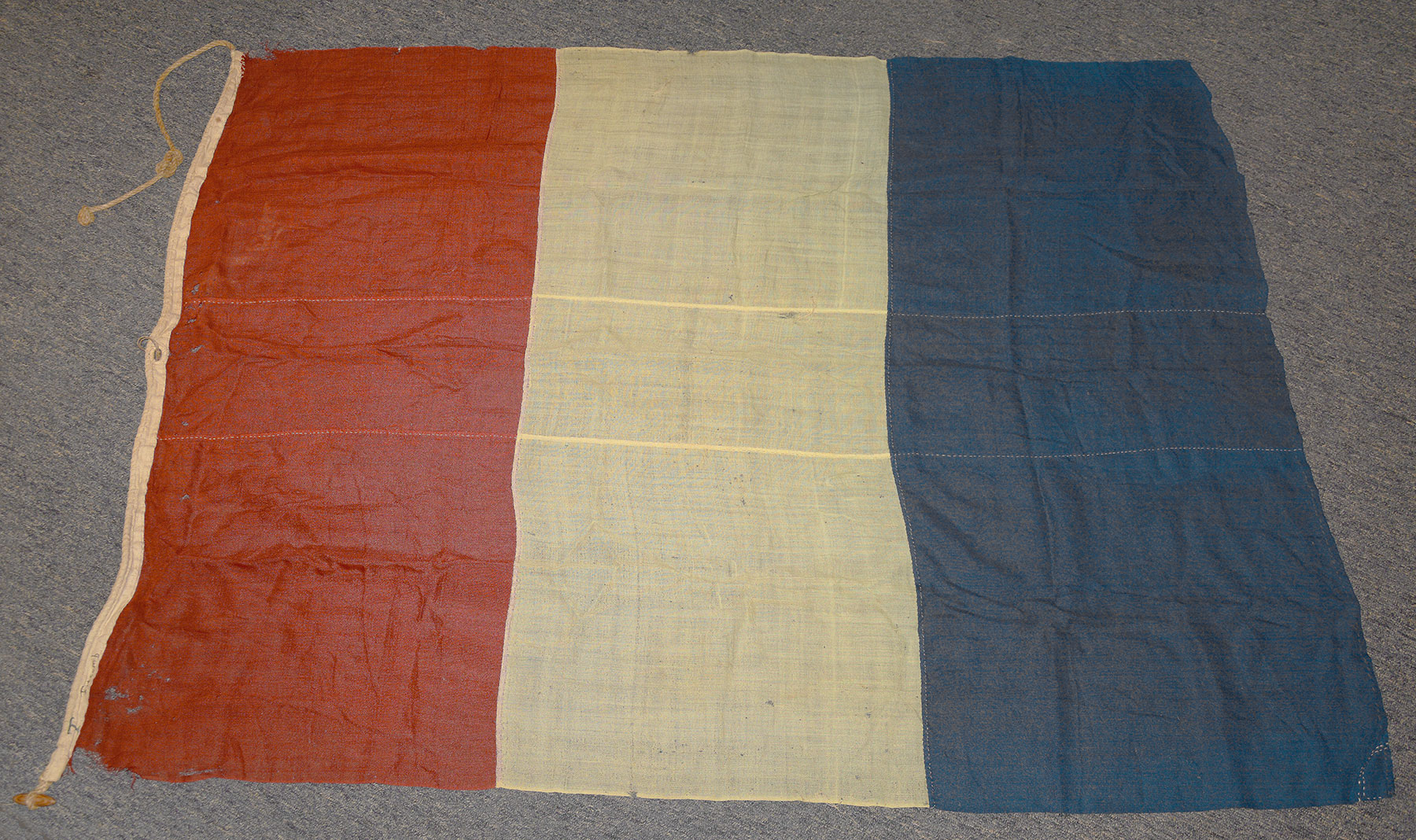
Hover to zoom

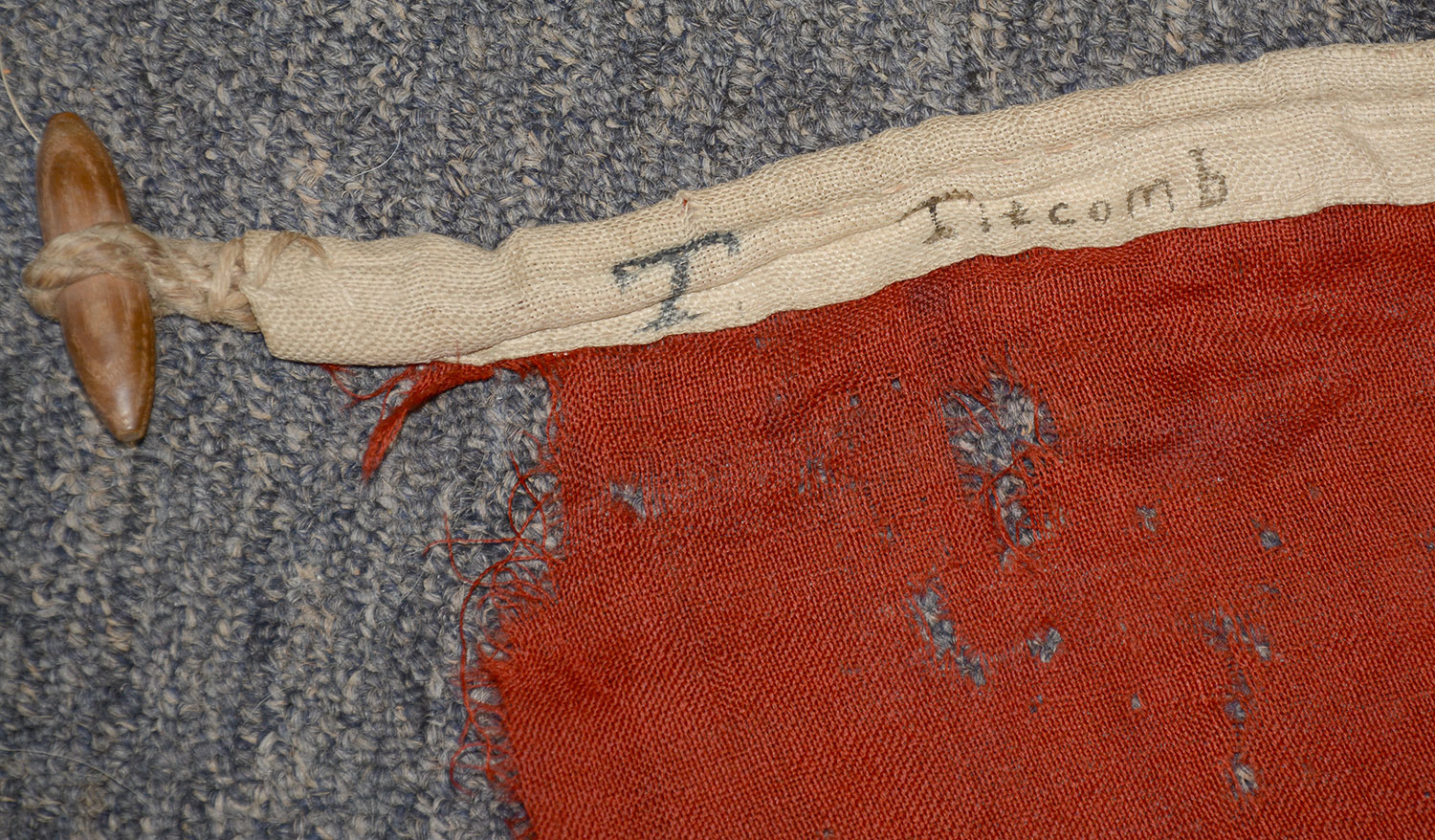
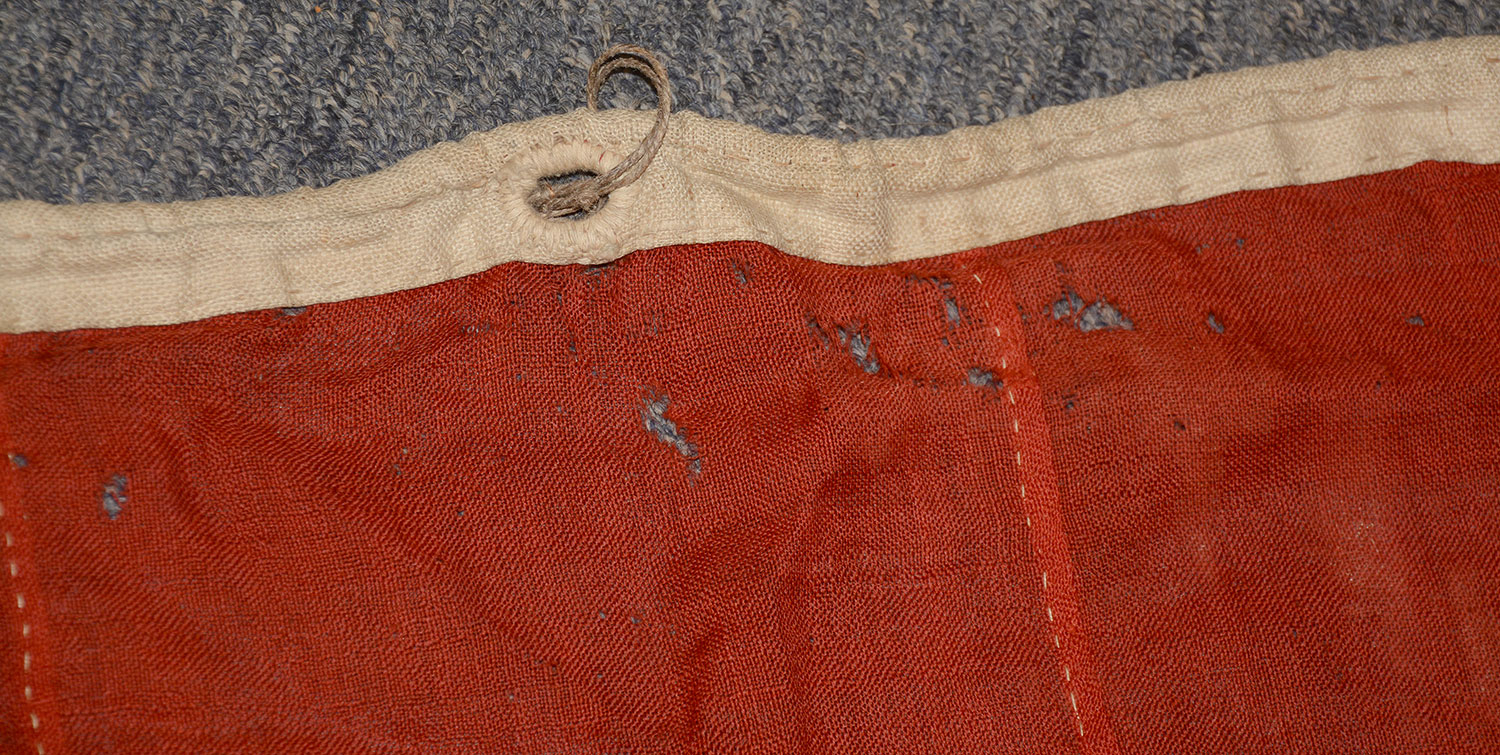
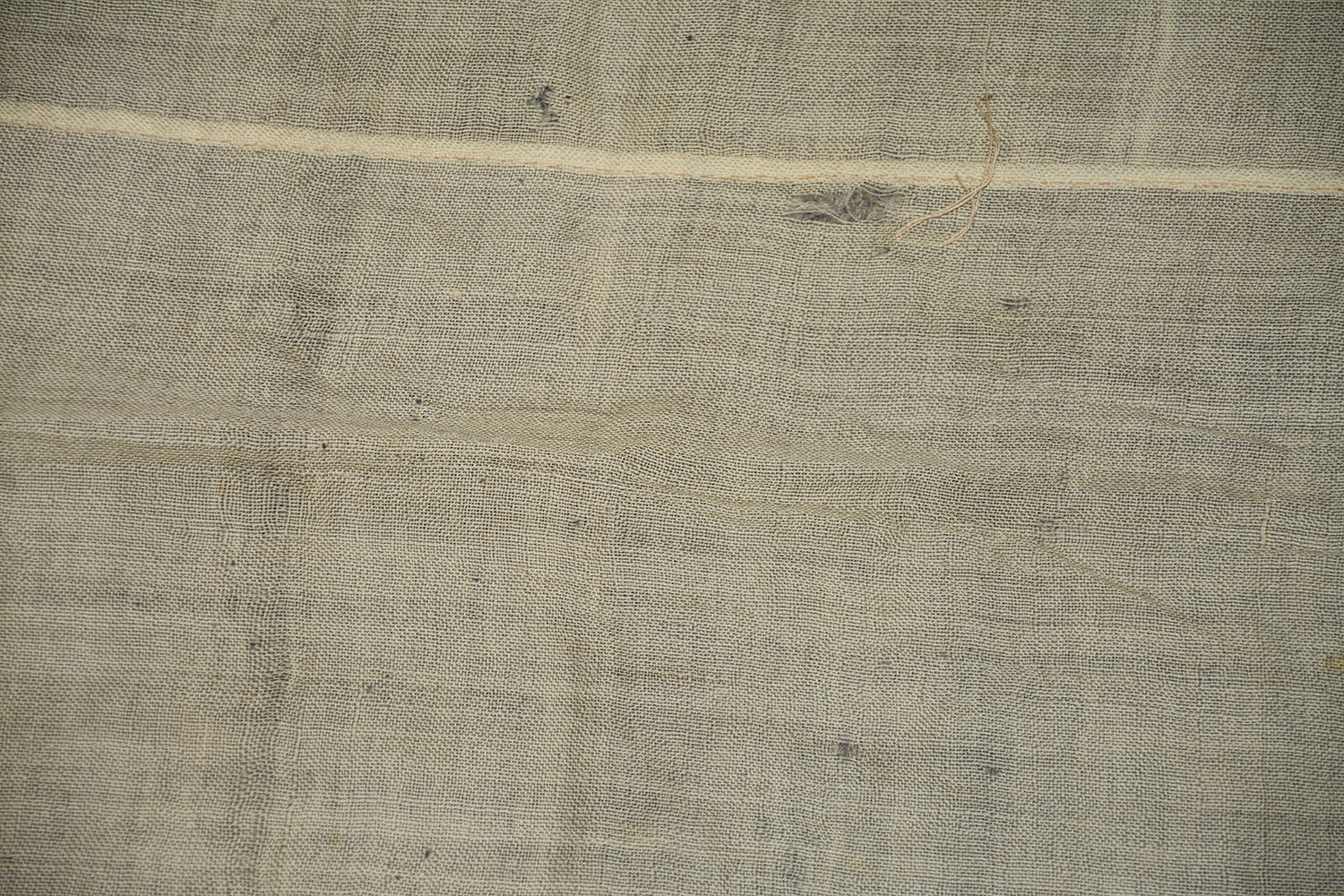

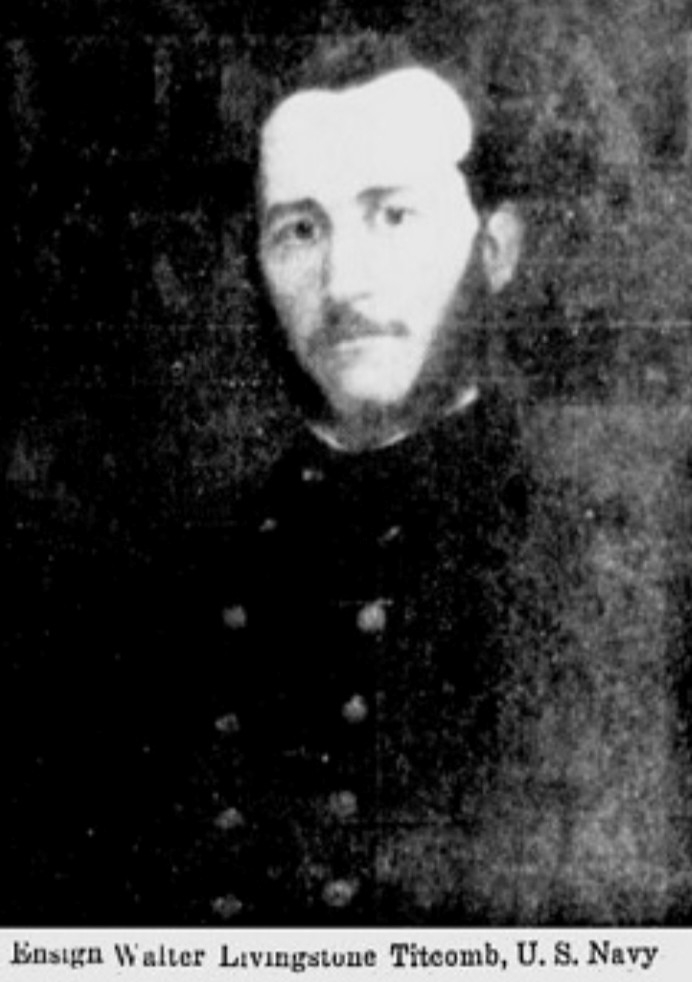
$450.00 ON HOLD
Quantity Available: 1
Item Code: 1179-276
Walter Livingston Titcomb was made an Acting Ensign in the U.S. Navy on Oct. 7, 1863, and served just under a year before drowning with most of the crew of the monitor U.S.S. Tecumseh, which struck a mine and quickly sank in the Battle of Mobile Bay, August 5, 1864, eliciting Farragut’s famous, fighting response- “Damn the torpedoes. Full speed ahead!” Titcomb’s death was especially tragic for his family for he did not have to be aboard the doomed vessel, but had volunteered when his own ship, the USS Owasco was kept at the Pensacola Navy Yard for repairs, sending home the following letter to his father in Maine: "Farragut is about to attack Mobile: he has not men enough now; and there will be hot work before he gets in. As the Owasco is at the Navy Yard for repairs, and will be unfit for duty until October, I have offered my services for the impending fight, and asked to be transferred temporarily to some vessel that will take an active part in the engagement. I came out here to fight for the cause; and I wish now to do all in my power to advance it; and I will never go home and have it said that I lay idle at the Navy Yard while gallant men were struggling to take Mobile. Have I done right, father? (Quoted in The History of the Descendants of John Dwight, of Dedham, MA Vol 2 by Benjamin Woodbridge Dwight.)
This flag, until recently in the Texas Civil War Museum as part of their Civil War naval collections, was recorded by them as descending in the Titcomb family with a tradition of having been sent to them after Walter’s death. The flag is made of thin wool bunting and measures roughly 45” by 62” with a 1” canvas hoist edge securing a rope with wood toggle at the top, and having a handsewn grommet in the middle. The flag has three vertical stripes: red, white, and blue (from hoist to fly,) an international signal to keep clear and also for the letter “T,” which appears handwritten in old ink on either side of the hoist near the top. One side there is in addition some faded stenciled letters ¾” tall that we cannot decipher- perhaps a maker’s name. On the other in old brown ink is “Titcomb.” The red and white strips are about 20” wide and the blue is about 22” wide, with all three made in three panels, 18, 9, and 18 inches tall top to bottom. The condition is very good, with strong colors, a few small holes overall, with one period repair at the top fly corner, and some slight tearing at the top and bottom corners next to the canvas hoist and a few spots along the middle, but nothing egregious. The rope in the hoist edge is securely in place. Please see our photos.
The family tradition was that the flag had been sent to home after Titcomb’s death and had come from the Tecumseh. The ship was monitor, carrying two impressive 15-inch guns firing 450-pound solid shot or 350-pound shells with range of about 1-1/4 miles. Construction had begun in October 1862, the vessel was launched in September 1863, and commissioned in late April 1864. The ship had seen action in James River before sailing to Pensacola in July to join Farragut for his planned attack on Mobile- the largest Confederate port still open on the Gulf. Titcomb was among 12 members of the USS Owasco crew to transfer to the ship before it left Pensacola for Mobile, where it would be one of four monitors to help protect the wooden ships of Farragut’s fleet, which would have to deal, with two Confederate forts guarding the harbor entrance, Confederate vessels including the ironclad ram “Tennessee,” and also a minefield filled with “torpedoes.” The Tecumseh was in the lead of Farragut’s line passing close by one of the Confederate forts in a channel known to be clear of mines when the ship’s captain saw the Tennessee and escorts had changed position, leading him to steer into the Confederate minefield to confront them and protect the wooden vessels to the rear rather than stay in the cleared channel and have to turn back. The ship struck a Confederate mine very shortly after, and sank in less than two minutes, carrying some 94 officers and men out of 115 to the bottom, including all but one of the Owasco crewmen who had joined the ship at Pensacola.
Born in 1841, the son of a sea captain, Walter Livingston Titcomb, had been educated in Germany and England, and was listed simply as a “mariner” in the 1860 census of West Gardiner, Kennebec, Maine, living then with his parents and siblings. He had married in September 1861 and the couple had a son born Nov. 1, 1863, soon after he had passed the necessary examinations and was commissioned in the Navy. His wife remarried and his son took his step-father’s last name. Ensign Titcomb and most of the crew still remain aboard the Tecumseh. This is a very telling memento of devotion to the cause and sacrifice. [sr][PH:L]
~~~~~~~~~~~~~~~~~~~~~~~~~~~~~~~~~~~
THIS ITEM, AS WITH ALL OTHER ITEMS AVAILABLE ON OUR WEB SITE,
MAY BE PURCHASED THROUGH OUR LAYAWAY PROGRAM.
CLICK HERE FOR OUR POLICIES AND TERMS.
THANK YOU!
Inquire About “HAVE I DONE RIGHT, FATHER?” SIGNAL FLAG SENT HOME TO THE FAMILY OF ACTING ENSIGN WALTER L. TITCOMB, USS TECUMSEH, SUNK IN THE BATTLE OF MOBILE BAY
Most Popular
Historical Firearms Stolen From The National Civil War Museum In Harrisburg, Pa »
Theft From Gravesite Of Gen. John Reynolds »
Selection Of Unframed Prints By Don Troiani »
Fine Condition Brass Infantry Bugle Insignia »
Large English Bowie Knife With Sheath 1870’S – 1880’S »
Imported (Clauberg) Us Model 1860 Light Cavalry Officer's Saber »
featured item
DECEMBER 1862 LETTER WRITTEN BY COL. JOSHUA LAWRENCE CHAMBERLAIN TO HIS WIFE FANNY
Here we have a letter written by a man who needs no introduction, Joshua Lawrence Chamberlain. This four-page letter is written on standard 8.5 inch by 11 inch unlined paper. In period ink, Chamberlain writes to his wife, Fanny, from the camp of the… (557-250B). Learn More »


